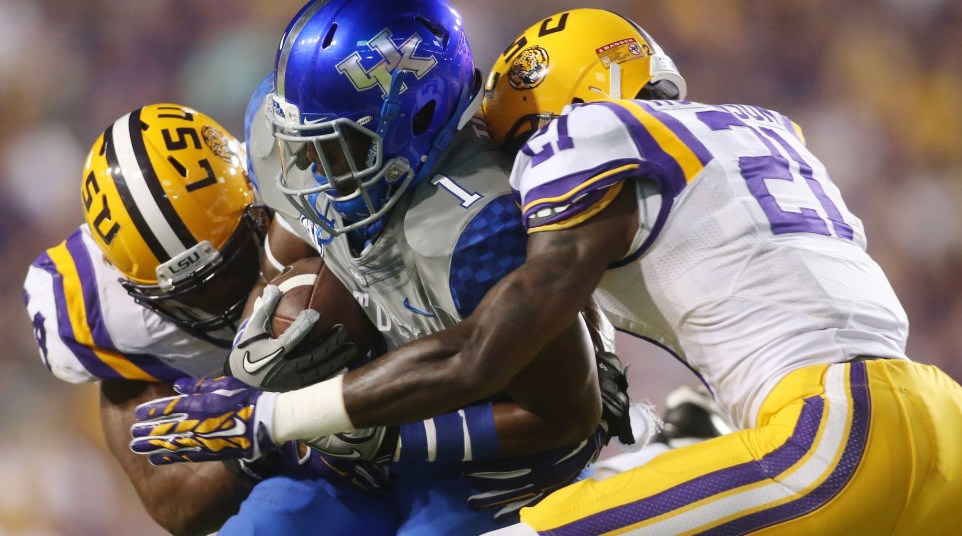Can LSU repeat as the SEC's No. 1 defense?
It’s still a bit surprising to say: LSU led the SEC in total defense in 2014.
Ole Miss’ Landshark defense garnered headlines, Alabama’s ever-punishing defense hammered teams as usual and Arkansas surged to become one of the most underrated units in the country, culminating with two SEC shutouts at the end of the season.
But it was the young Tigers, the same team that was gashed for 600 total rushing yards in its first two SEC games, that ended up leading the pack by season’s end.
Can they do it again?
LSU overcame a total lack of pass rush, a run defense that didn’t shore up until midseason and a lot of youth up and down the depth chart to reach No. 1 status, in large part thanks to a stifling secondary that allowed the third-fewest passing yards per game in the country.
The Tigers have to replace five starters on defense, including three early departures in CB Jalen Collins, LB Kwon Alexander and DE Danielle Hunter. They’re also replacing defensive coordinator John Chavis, architect of five straight defenses that ranked in the top 15 nationally, with Kevin Steele.
Despite the changes coming on the defensive side, there’s good reason to believe LSU can repeat as the SEC’s top defense.
- Deeper secondary — How can a team lose three starters in the secondary (Collins, Ronald Martin and Rashard Robinson) and actually improve? It’s just a way of life when you call yourself “DBU.” Tre’Davious White returns after a solid first year as a starter at cornerback, while Jalen Mills returns for his senior year. The rising stars in the secondary are what could make LSU very special, even in the scope of their storied recent history of defensive backs. Jamal Adams looks like he could be a star sooner than later, while Dwayne Thomas is on his way back from a torn ACL. Ed Paris, a rising sophomore, has plenty of talent, while Kevin Toliver is one of the most touted cornerback recruits in the nation.
- Improved pass rush — LSU’s defensive line simply couldn’t apply pressure last season. The Tigers finished 13th in the SEC in sacks and had just 37 quarterback hurries. Jermauria Rasco and Danielle Hunter are both gone, so how does LSU improve? Ed Orgeron, that’s how. Brick Haley was a very good coach, but he wasn’t able to coax enough out of the defensive line. Several young players, like Sione Teuhema, Deondre Clark, Tashawn Bower and Lewis Neal will be expected to step up, while Arden Key has star potential as an incoming freshman. The pass rush can’t be much worse than it was a year ago, and if they can apply pressure the secondary could feast.
- “Multiple” defense — While Chavis certainly brought plenty to the table, he stuck to nickel and dime formations to take advantage of the talent on LSU’s roster. Steele has already talked about using multiple formations, including 3-4 looks that LSU has steered away from in the past. Linebacker Lamar Louis told ESPN that he thinks having multiple looks will allow LSU to adapt to the SEC’s varied offensive styles more readily than the Tigers did during the Chavis era.

